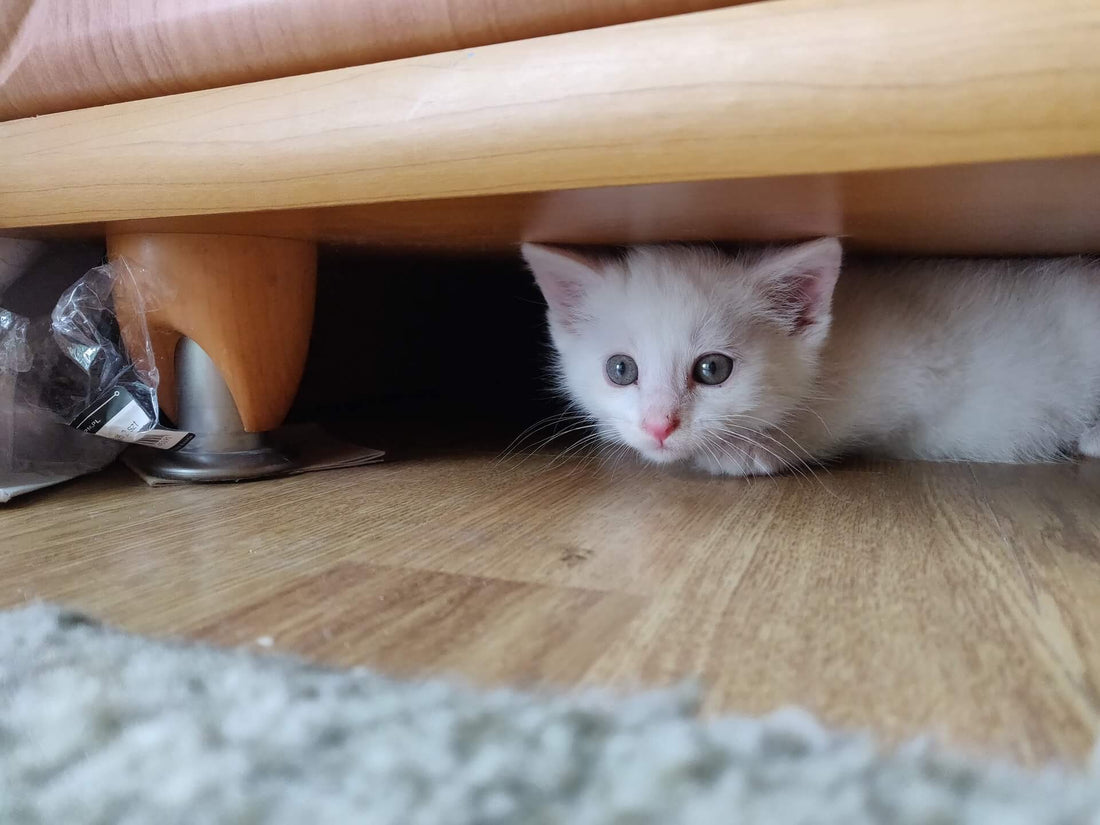Many catkeeper will find that cats are reluctant to get close to them for a long time after bringing new cats to their homes. This is because catkeeper have not used the correct method to make cats adapt.
If you want to know what you need to do when your cat arrives in a new home, you must first understand the habits of this animal. Felines are suspicious and sensitive by nature, and are very cautious in unfamiliar environments. Until they become familiar with a small space, they will use it as a base to gradually explore the surrounding environment. We can virtualize the cat's adaptation to the new environment as a progress bar.

When we just brought the new cat home, the progress bar of the cat's adaptation to the environment was 0%, and it would first find a corner to hide. If the catkeeper stays with the cat all the time, or tries to catch it, then the progress bar will always be 0%, or even the progress will be reversed - the cat will have a stress reaction.
When the cat gets used to the corner or small room it is hiding in, the progress bar will increase to 10%, and it will slowly come out carefully and explore other areas.
We assume that the corner where the cat initially hides is at the bottom of the sofa in the living room, then when the entire living room is explored, the progress bar of the cat's adaptation to the environment will increase to 30%~40%, depending on the complexity of the living room.
After the living room exploration is completed, the cat will consolidate the 40% fitness, and then explore other rooms, such as bedroom, balcony, bathroom, kitchen, etc., until all rooms are explored, and the progress bar reaches 100%.
Don't think that this progress bar will only increase, everyone should be able to see that the scene I simulated is the ideal situation where everything is going well without the existence of the catkeeper. But in fact, catkeeper do exist, and many novice catkeeper will take the initiative to "help" cats adjust to their new homes. If the catkeeper is too involved in this, the cat's adaptation progress bar will change, and it is very likely that the progress will be stagnant or even reversed. Because in the cat's concept, the new environment is unknown, and it may be full of danger. To explore and adapt, it can only rely on its own initiative. Any interference from the outside may aggravate the cat's suspicion. The cat will retreat to the 10% where it was initially hiding, and then spend more time assessing the safety of the environment and the progress of adaptation.
So when the cat just arrived at the new home, the more care the better, the cat can only rely on itself to establish a sense of security. So the correct way is this:
1. Cleaning
Cats will always feel unfamiliar and afraid in a new environment. In order to increase their sense of security, they will hide in small corners where the light is dim and "enemies" cannot enter, for example, under the sofa, under the bed, the crevice of the coffee table, and small corners are all places where they will hide. These places are usually difficult to clean, and they are often covered with dust. The cat will inevitably get dirty after drilling in. These places are usually difficult to clean, and they are often covered with dust. The cat will inevitably get dirty after drilling in. For cats with weak immune systems, it is not feasible to bathe them directly. It is better to clean the room before taking the cat home and block the gap with something like a towel.

2. Do not touch the cat directly
After the cat is brought home, the cat must have a sense of panic about the new home. The cat owner is a strange existence to the cat. If the catkeeper is close to the cat at this time, it will make the cat more afraid. It seems that the catkeeper hugs the cat, comforting the cat is good for the cat, so that the cat can adapt to the new home, but if the cat is not familiar with each other and hugs the cat, it will feel scared. Therefore, it is best for the catkeeper to stay a little further away from the cat, and give it something to slowly adapt to it. But remember in this process, your attitude must be very good, let it feel warm.

3. Provide a good living environment
After the cat is brought home, don't ignore the cat completely. You can prepare a good living environment for it. For example, first arrange the new cat in a relatively independent and quiet room. If not, you can also put the cat in the warehouse where the sundries are kept at home, and put the food bowl, water basin, and cat litter box in it (of course, it must be separated by a relatively large distance), and let the cat get used to it for a while. In this way, it will feel warm and have a sense of belonging.
4. Use items that the cat is familiar with
New is not necessarily good. Unfamiliar things will make cats sensitive, including unfamiliar smells, unfamiliar people, unfamiliar places, and if the reaction is severe, gastrointestinal problems may occur. If the cat has something that was often used in the previous environment, you can bring it with the cat when it comes to the new home. Putting it in the area where the cat adapts to the environment can reduce the cat's sense of vigilance in the unfamiliar environment. So we can take something or a toy from where the kitten used to live so that it has familiar things around it. Food should be the same as what the cat was eating before to reduce gastrointestinal discomfort caused by the stress response.

5. Distract the cat's attention
Although cats are timid, they still maintain their curious nature. If the cat has been afraid to explore the new home, the catkeeper can use some measures to distract the cat after they have been alone for a while. For example, use delicious snacks or playful toys to attract cats, so that they can feel very relaxed, which can also help cats relieve stress and visit their new home with curiosity as soon as possible.
In fact, the premise of doing these things is to maintain the greatest patience, and to understand that this is a lasting process. This depends on the progress of the cat's adaptation. Some cats are more daring and can get through this time quickly, but some cats are very shy and may not be able to adapt for a long time.

